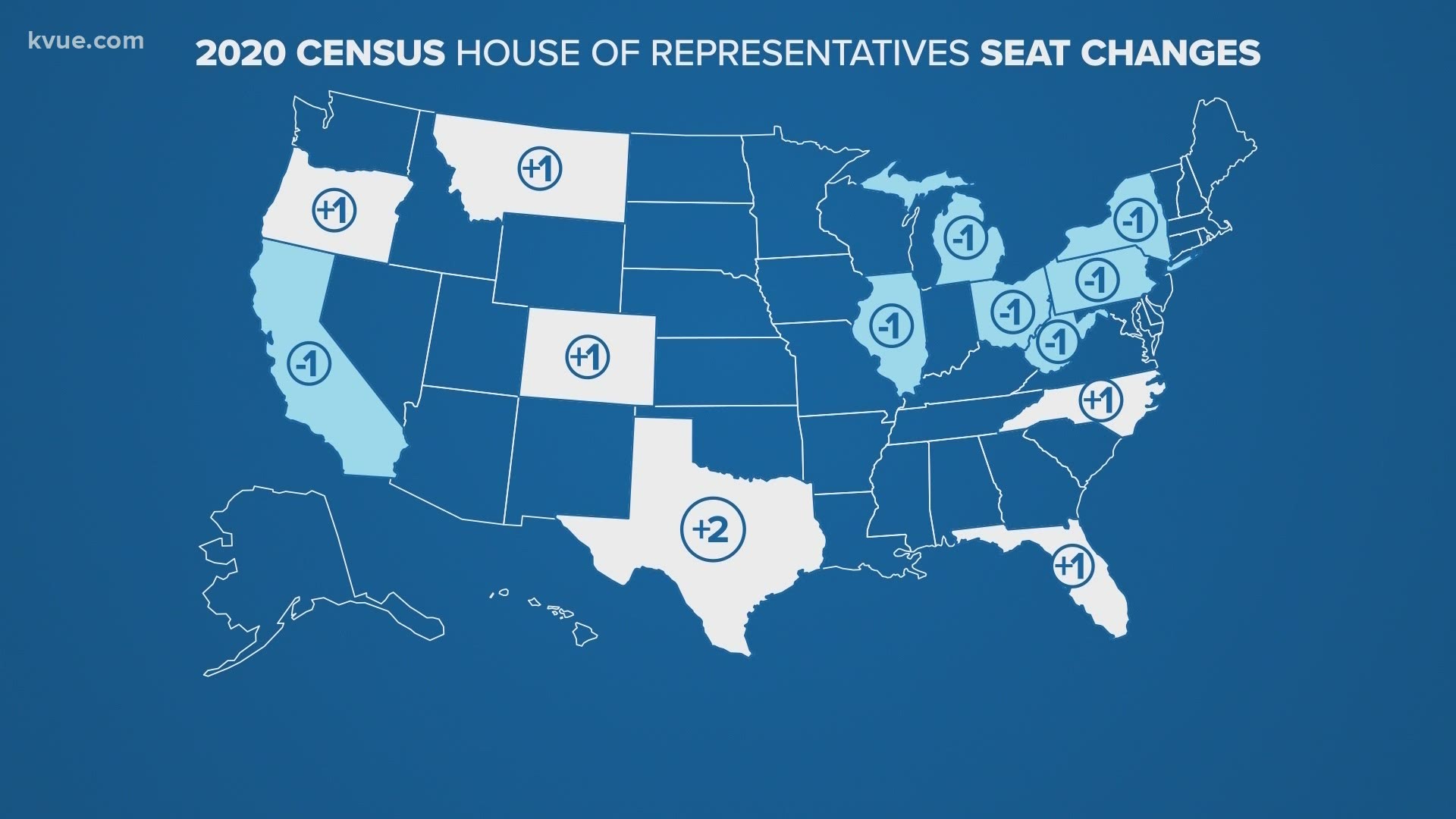AUSTIN, Texas — Initial data from the 2020 U.S. Census shows that Texas has gained two additional congressional seats as a result of population growth.
That means the state's share of votes in the U.S. House of Representatives will grow to 38 for the next 10 years, and the state's electoral college will grow to 40 votes. In comparison, heavily populated states like California and New York each lost one seat.
Experts say something that could be impacted by the additional seats is redistricting.
Redistricting is where the Texas Legislature re-draws congressional district maps. As a result, who you vote for is shaped by where you live.


Sherri Greenberg, a former Texas state representative and current professor of practice at the University of Texas at Austin's LBJ School of Public Affairs, explained that redistricting happens every 10 years following the census.
"Redistricting goes back to one person, one vote, and every 10 years after the census, you have redistricting in various fashions in all of the states and at local levels, too," she said, adding that the census helps shape redistricting.
"When the Texas Legislature draws these districts, they have to look at the demographics. They have to look at the minority populations. They have to take all of these considerations into account," she said.
Overall, Greenberg said the addition of two districts could alter the makeup of how many Democrats and Republicans are representing Texas in the U.S. House.
"The party in control wants to maintain its dominance. And certainly what you're looking at is the U.S. House of Representatives with a thin margin, I think that the Republicans will look to see how within the bounds of what they think can withstand legal challenges, how they can get two more Republican seats," she said.
Meanwhile, many have voiced concern over the process of redistricting in the past.
"Texas has a really long history of discriminating and redistricting against Latino voters in violation of the U.S. Constitution and also the federal Voting Rights Act," said Patricia Zavala, a senior policy analyst for Jolt, a Latinx civic engagement organization. "We've seen, probably in the last three decades, courts come down [with] the decisions time and time again showing that the maps that were drawn by this Texas Legislature were in violation of federal laws, drawn in a way to dilute the power of communities of color and their electoral power."
The last time something like that happened was in 2011.
"And so, what we're gearing up for during this redistricting session that's going to happen in the summer is to be very prepared and make sure that we are providing full transparency every step of the way. That is what we are calling on the state legislature to do, ensure that we have a fair and transparent process and that people are allowed to weigh in in the process," Zavala said.
She also had a message for state lawmakers.
"I would tell them that when we look at the census data, the numbers are clear that this massive boom that we've seen in population growth, the reason why we picked up two new congressional seats is because of the growth of [the] Hispanic population and communities of color across Texas," she said. "So this vast population growth over the past decade is driven by these communities. So these new redistricting plans should respect this demographic growth and create new districts that provide equal electoral opportunity for Latinos and other minorities."
Greenberg explained that the data needed to complete redistricting won't be available to lawmakers until the end of September, which likely means Gov. Greg Abbott could call for a special session in order to complete the task.
"In a special session, they can only be 30 days. Only the governor can call them and only the governor can determine what's on the call, what the Legislature will take up. Now, having said that, the governor can certainly call back-to-back special sessions if the business is not finished in 30 days," Greenberg said.
In January, the Texas Senate Special Committee on Redistricting started the process. Locally, State Sen. Dawn Buckingham (R-Lakeway) is on the committee.
"Having apportionment numbers released today, 4 days ahead of their self-imposed new deadline, was a nice surprise. As expected, Texas picked up new congressional seats, the only state to pick up more than one," Buckingham's office said in a statement. "Picking up two additional congressional seats is a great thing for Texas. We will remain the second-largest delegation in congress, but also our electoral college votes increase to 40, so there are various positive repercussions for Texas in these additional seats."
PEOPLE ARE ALSO READING:

